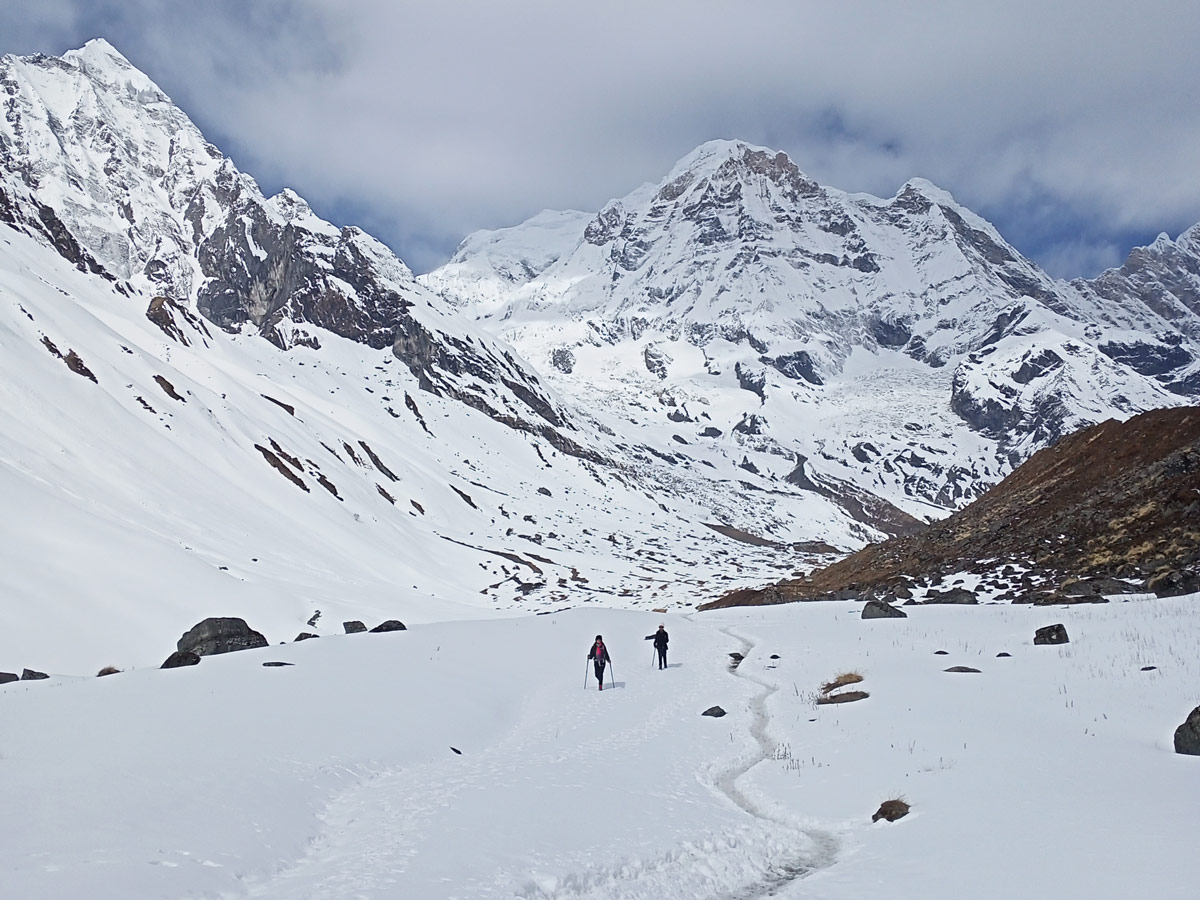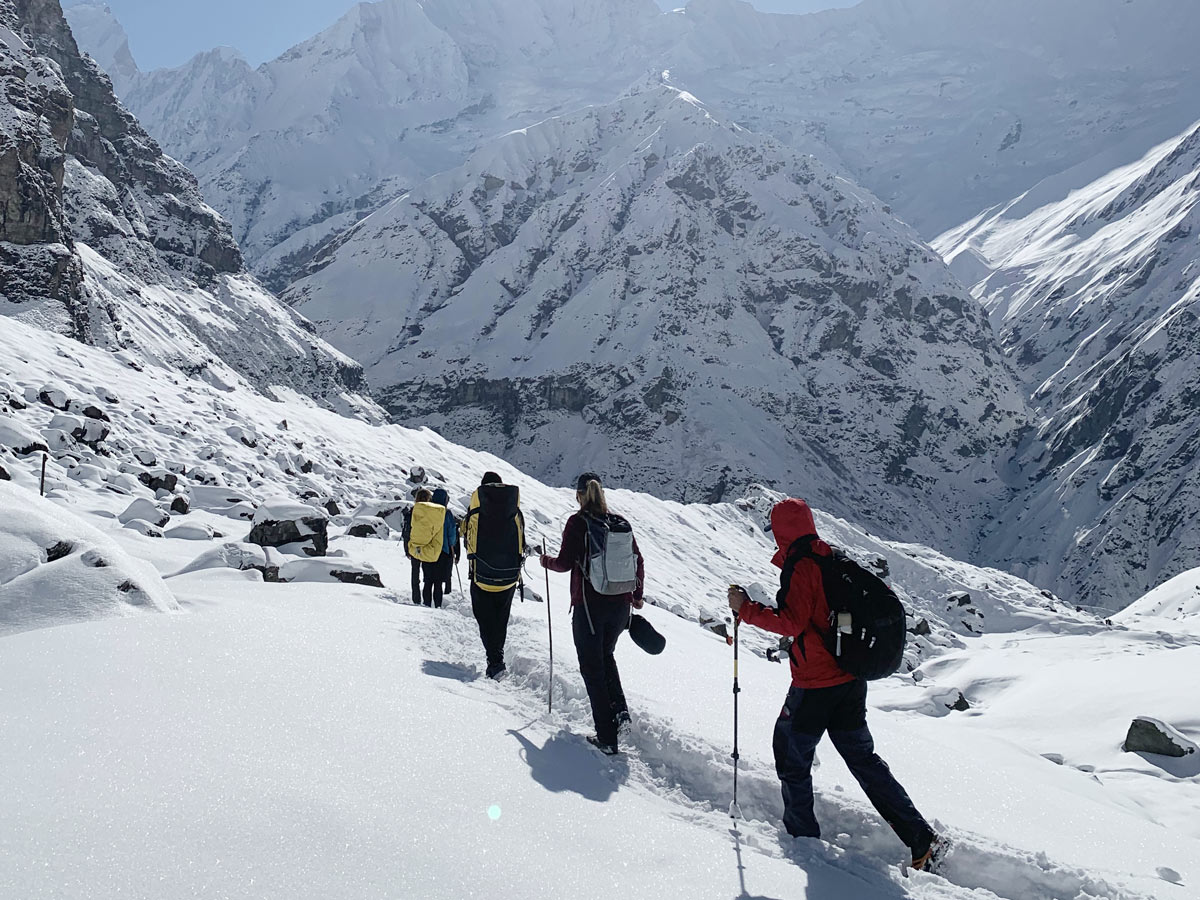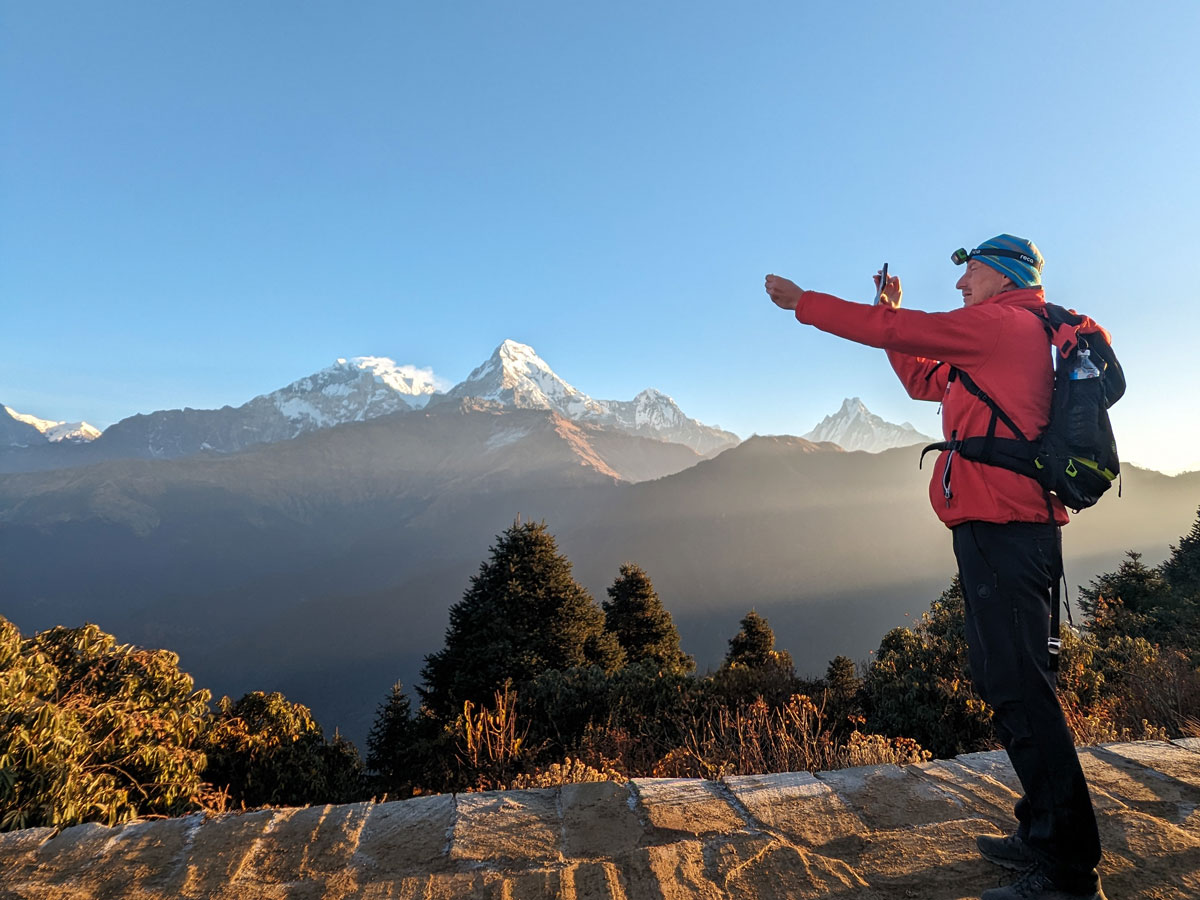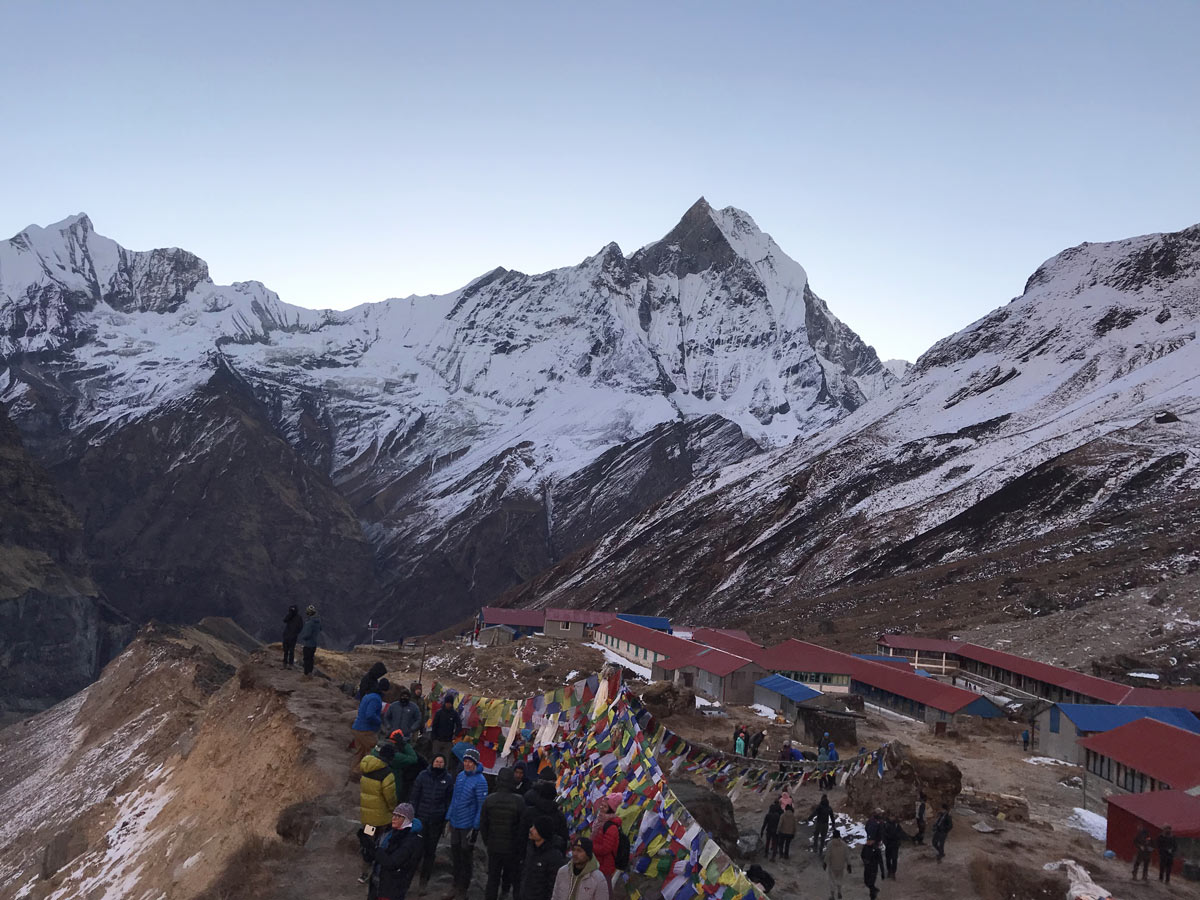A popular name among the trekking routes in Nepal, the Annapurna Base Camp trek is a memorable odyssey straight to the base of the majestic Annapurna massif.
This trek features jaw dropping scenery and a warm cultural experience traversing through various landscapes.
However, despite the popularity of the Annapurna Base Camp trek, questions regarding the safety of the trek are often raised amongst the intrepid trekkers.
These concerns are natural given the high altitude and difficult trail conditions of the trek.
So, is Annapurna Base Camp Trek safe? The short answer to this question is yes. However, one needs to delve deeper into the aspects of how the trek is safe.
Therefore, with this blog we aim to demystify the multifaceted concept, that is the safety of the ABC trek. Read along as we dissect the natural, medical, and logical aspects playing a role in the safety of this trek.
Natural Challenges During the ABC Trek
While the ABC trek features breathtaking grandeur of nature, it also brings along equal challenges. To have a safe and enjoyable experience, it is important that you are aware of these natural concerns related to the Annapurna Base Camp trek difficulty.
Altitude
The Annapurna Base Camp trek takes you beyond the altitude of 4,000 meters (13,123 feet). While this might not sound very challenging, for people hailing from lower altitudes like sea levels, this can pose a serious threat.
The level of oxygen is very limited at this altitude as the air thins out, and in this realm, symptoms of acute mountain sickness are very common. Altitude sickness can kick in accompanied by symptoms like headache, nausea, fatigue, dizziness, lack of coordination, and more.
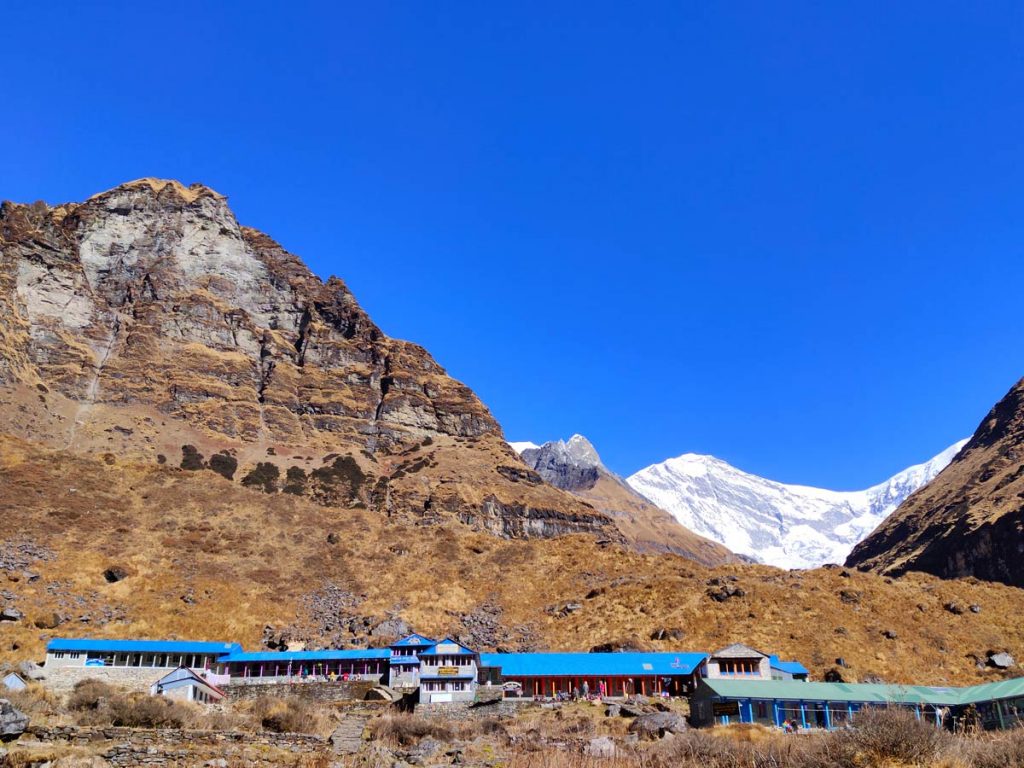
These symptoms, while they can be prevented, can also turn life threatening at times which might cause you to descend back to lower altitudes making you adjust your itinerary, or even leave the trek midway if it gets severe.
Weather
The Annapurna Base Camp trek is open for trekkers all year round. However, different seasons in the ABC trek present the region in different perspectives while bringing their own set of hazards.
The monsoon season makes the trekking trail slippery as you will be crossing the forest area full of mud, needless to mention the abundant infestation of leeches. If you are trekking the ABC in monsoon, be prepared to tackle sudden downpours.
Monsoon also brings along the risk of landslide and trail blockage. Flash floods are pretty common in the area and crossing the suspension bridges as you traverse through the Modi Khola valley can also be a scary/risky experience.
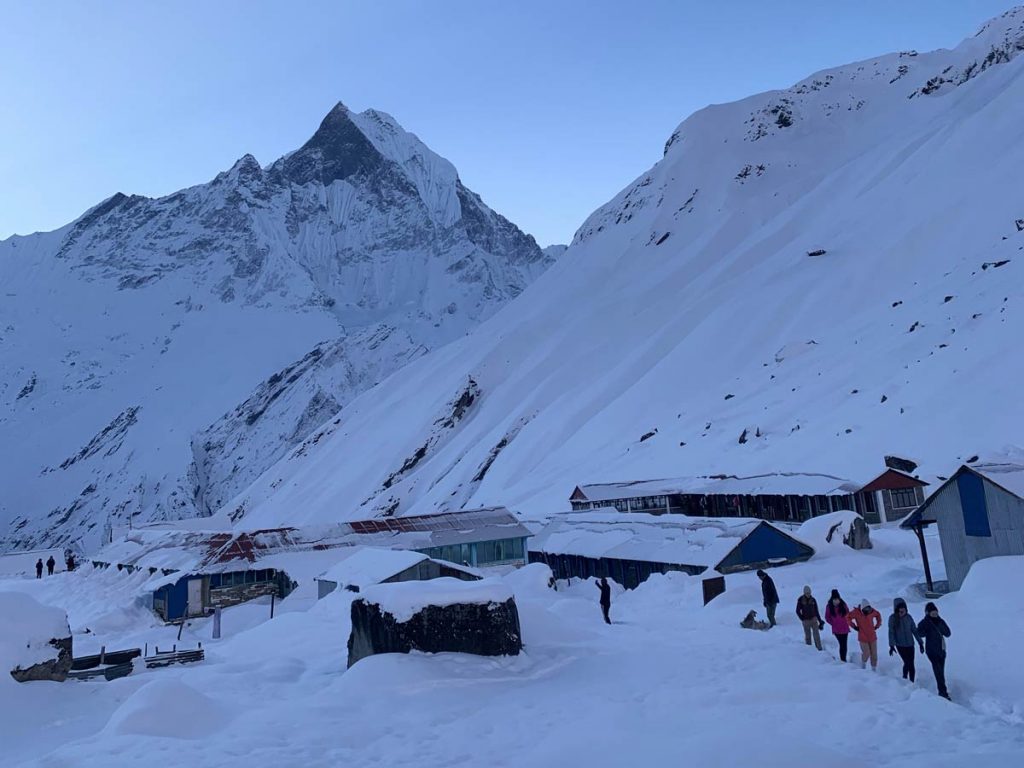
With winter comes the bone chilling temperatures ranging below –10 degree Celsius which might be impossible for underprepared trekkers to tackle, especially during morning and night.
The trail is covered with ice with frequent snowfall which might need the trekkers to carry micro spikes or ice cleats.
In the trek segment between Deurali and MBC, trekkers might also be at a mild risk of encountering an avalanche. So don’t rush to finish the trek asap, rather take your time and be updated regarding the weather conditions of the trail ahead. Therefore, it is important that you pick the best time for Annapurna Base Camp trek.
Terrain
The ABC trail is a natural challenge in itself as the trek features many steep ascents and descents along the Annapurna Base Camp trek distance. Tackling this undulating trek requires the trekkers to climb and get down certain segments more frequently.
Also, the uncountable number of stone stairs is one of the risk factors as it increases the chances of slipping, especially if it has rained. If the foot placement is not proper along the stairs, the chances of injury become high.
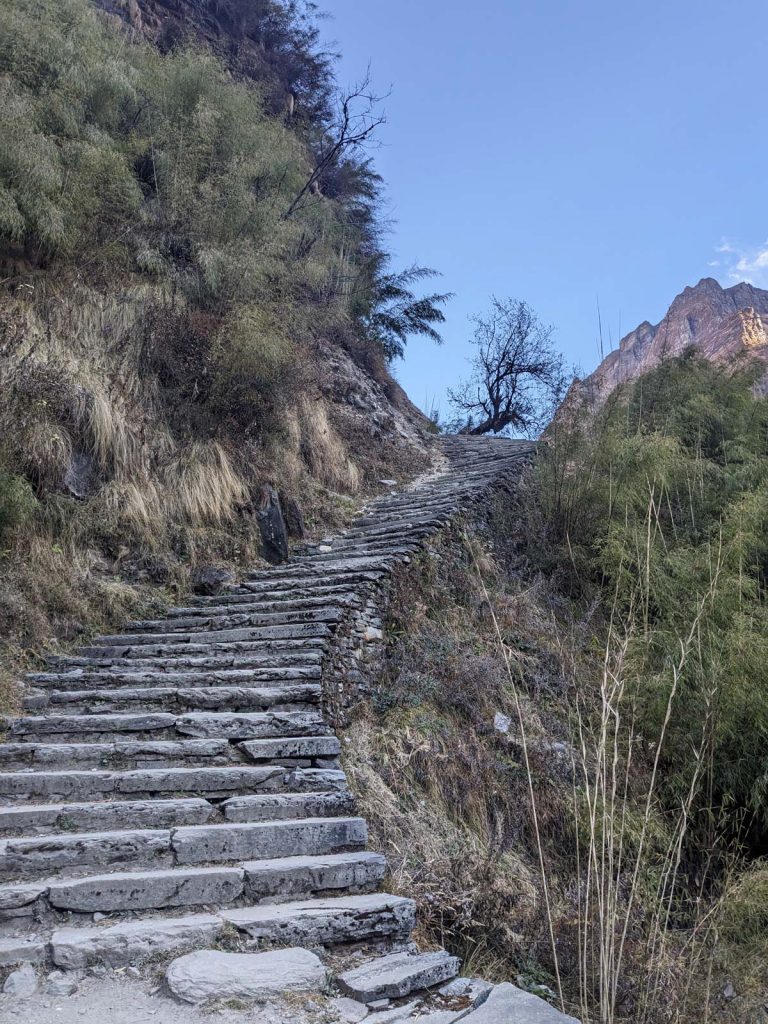
Trekkers experience more muscle movement than usual trails while ascending that requires additional cardiovascular efforts. Descending on these steps can impact the joints highly making it difficult to find balance.
The trail conditions can be a potential hazard as chances of falling might increase based on the season. Specific sections of the trek might feature river crossings or difficult climbs, adding to the challenge.
Wildlife encounters
This region is home to many floras and fauna. Therefore, you might get wildlife sightings along the way.
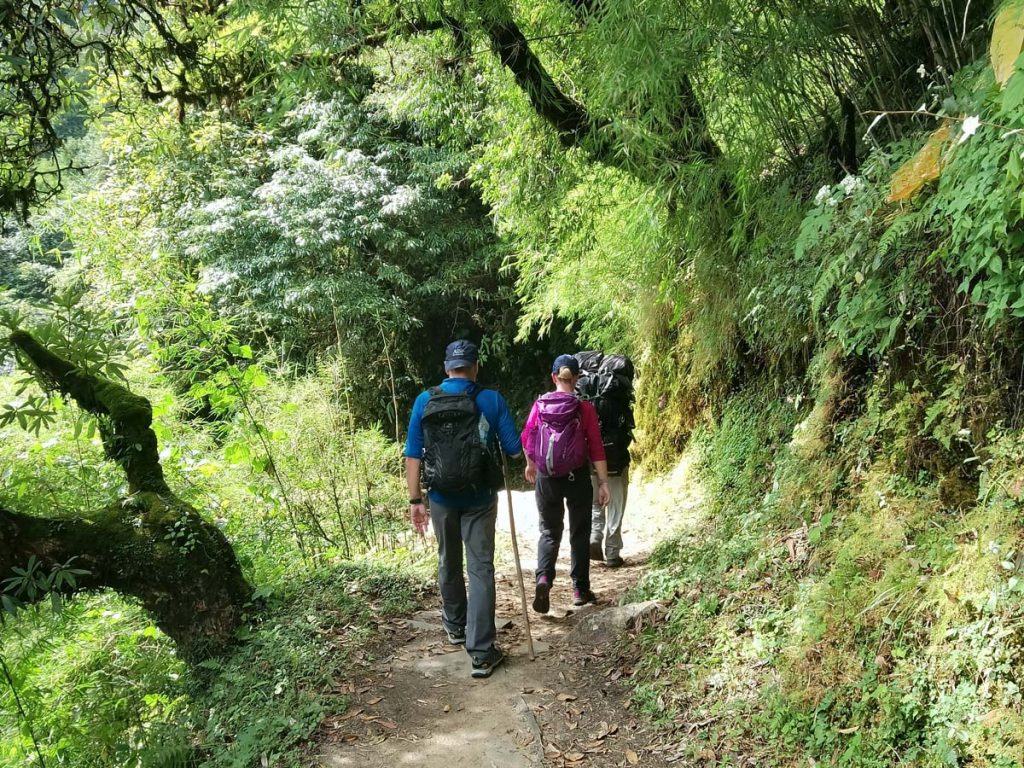
Although the chances and instances are very rare, you should still be wary of it. Make sure to enjoy the sightings from a distance and not disturb the ecosystem.
Physical Challenges During the ABC Trek
Besides the natural risks, trekkers might come across specific potential physical hazards based on the condition of their body and other factors like the season they pick for the trekking.
Although the ABC trek doesn’t demand a high level of physical fitness, below average fitness can invite risk along the trek as trekkers will need to walk for long hours on a daily basis in the moderately challenging terrain.
The hazardous combination of slippery trail and strenuous ascent and long hours of descents can induce physical challenge like slipping given you are not well prepared in terms of fitness, footwear and gear.
Possible Medical Emergencies on the ABC Trek
The exhilarating ABC trek can be daunting and test your physical and mental endurance as it might unfold unexpected medical challenges amidst the trekkers. Therefore, it is important that you are aware of the challenges and prepare accordingly, allowing for a safe experience.
Limited Access Along the Trail
The Annapurna Base Camp takes you to some of the remote villages of Nepal with limited access to road in the deeper sections of the trek causing the access to healthcare becoming limited as well. As you reach higher altitudes, medical facilities become less and less accessible.
With the nearest hospitals being at lower altitudes, it might take several trekking days to get proper healthcare facilities and treatments as no vehicles are available at disposal.
Medical emergency could be anything emerging from the preexisting health conditions of the trekkers or ones induced during the trek like altitude sickness or any kind of injury caused by fall.
While emergency evacuations can be arranged, there is always a hint of risk and inconvenience.
Minimizing the Risks on the ABC Trek
While the Annapurna Base Camp trek does pose some hazards to the trekkers, they can be mitigated by taking proper safety measures to ensure a safe and convenient adventure along the beautiful Annapurna region.
Guide
The safest you can be along the unknown trekking route of the ABC trek is in the company of an experienced and certified trekking guide.
As they have prior experience of trekking and the knowledge of weather patterns in the region, they can offer proper guidance in terms of route selection after thorough risk assessment.
Trekking guides are trained in first aid and can provide quick emergency responses as well as recognize the symptoms of altitude sickness as they onset. They also guide the trekkers regarding the safe speed at which they should ascend.
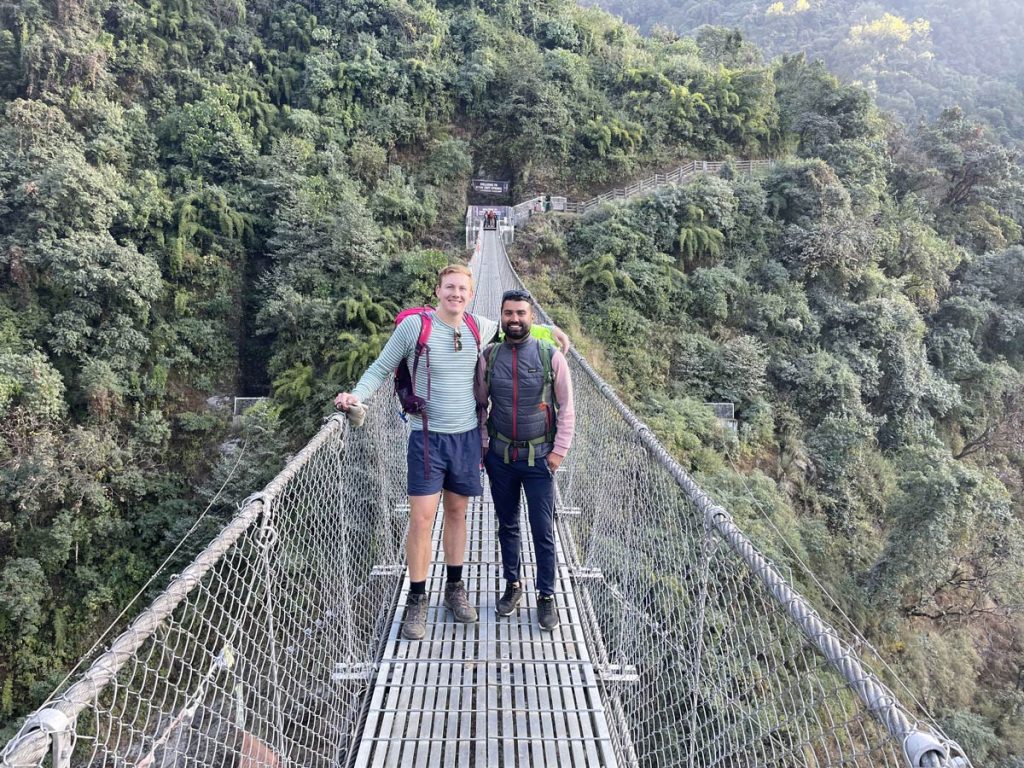
Guides, being familiar with the region, can also guide you through an alternative route if available in case of emergencies and trail blockage. They have knowledge of resting places in case of sudden weather changes.
Porter
Like guides, a porter is also an invaluable addition to your trekking squad so as to ensure your safety and comfort. Porters carry the heavy weight of the backpack while allowing the trekkers to maintain stamina throughout the trek.
Carrying the load of the gear can interfere with the proper foot placement on the stone stairs during the ABC trek and can lead to injuries. The presence of a porter mitigates these injuries and prevents the trekkers from getting over exerted and worked up.
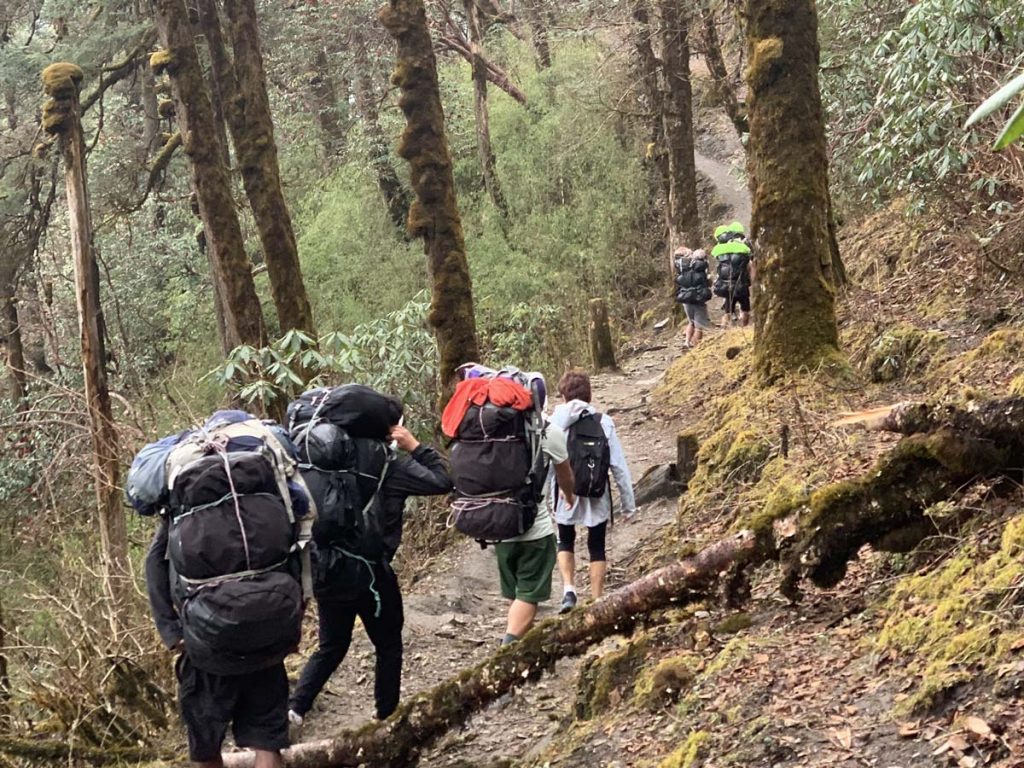
While trekking with Ace the Himalaya, we provide the trekkers with a knowledgeable guide as well as a porter to make their journey safe and easier. We adhere to ethical porter practices ensuring that they are not overloaded.
Proper packing
Packing the right gear is the key to emerging safe and successful from the trek. Be it the freezing temperatures of the ABC trek or the unpredictable weather, having the right gear can help you tackle all these potential risks.
Make sure to include proper layers of clothes and sturdy footwear along with safety gear like micro spikes and headlamps in your packing bag. Additional clothing like a shell jacket and a puffy jacket goes a long way.
While preparing for the ABC trek, you must be completely ready for any challenge as you conclude what to pack for the Annapurna Base camp trek.
Acclimatization
Preventing altitude sickness is a crucial aspect of mitigating the risks on the Annapurna Base Camp trek as it eliminates a major concern. Therefore, it is important that you are aware of the importance of acclimatization.
The ABC trek doesn’t take you to a very challenging altitude thus not needing an entire day dedicated towards acclimatization. However, the trek does feature in-built itinerary route such as the hike to Poon Hill.
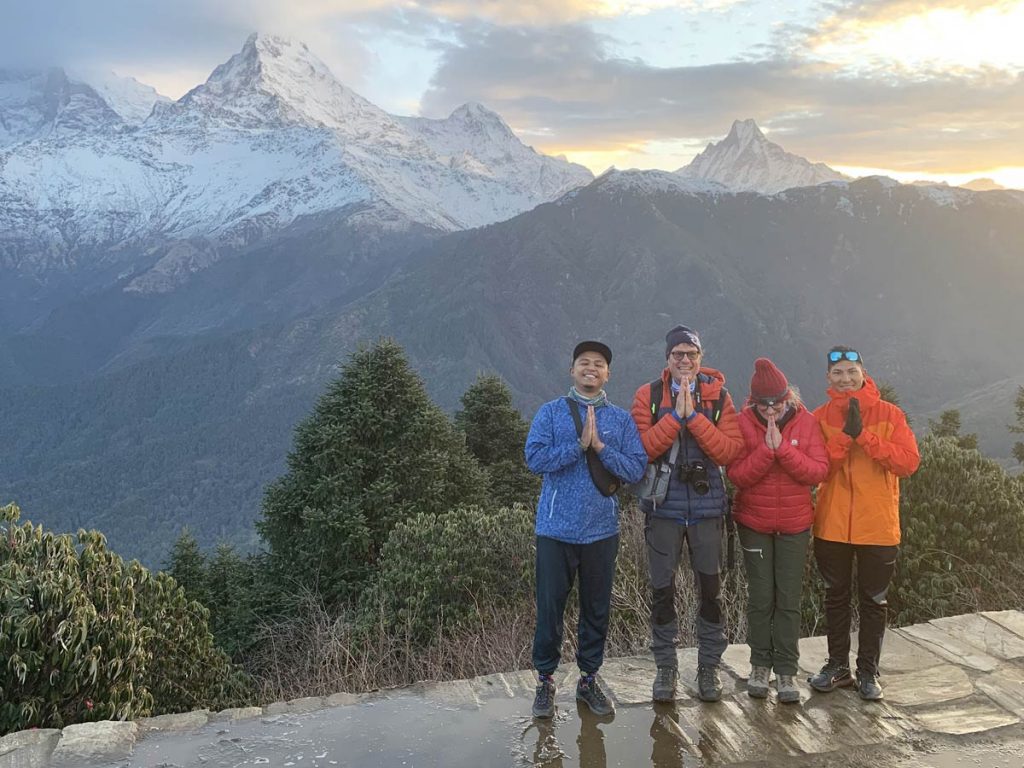
Make sure you don’t skip this hike as it prepares you for the 4,130 m high zenith of the trek- the Annapurna Base Camp.
Also, be mindful to be hydrated throughout the trek and ascend gradually and slowly to prevent altitude sickness. You can also have acclimatization medicines like Acetazolamide but only after proper consultation with the guide.
Prior Health Check Up
It is important that you go for a full body assessment before you head out on the ABC trek. Doing so can help you identify any underlying ailments and can determine whether you are medically fit to go on the trek.
Focus more on exercises building cardiovascular health and leg strength given the steep ascents and descents that the trek features. These things prevent the risk of any serious medical emergency in the trek with limited access.
First-aid Kit and Basic Knowledge
A well-stocked first aid kit must make it to your backpack as you set about on the Annapurna Base Camp trek. This can easily mitigate the risk of less medical facilities on the trek, especially when minor injuries and general illnesses are concerned.
Although our guides are first aid equipped and trained, your basic knowledge of first aid and emergency safety procedures can be an added advantage along the remote trails of the Annapurna region.
Pre trek briefing and communication
Before you embark on the trek, make sure to be part of the pre-trek briefing session as it can give you lots of important information related to safety procedures and acclimatization protocols to adhere to during the trek.
Being able to stay connected to the outer world also adds to the safety of the trekkers during the trek. You can get local SIM cards with data plans although they have limited coverage during the trek.
If you are with a guide, it adds another advantage as guides carry satellite phones or radio for rescue efforts and emergency communication.
Travel Insurance
Having travel insurance is highly advised for the trekkers for added safety. Pick one that includes provision related to emergency evacuation like helicopter rescues in the remote trail and repatriation.
This insurance allows the trekkers access to standard and easy healthcare in case of emergencies without burdening them financially. Make sure you get standard insurance that covers trekking up to an altitude of 6,000 meters.
Common Safety Concerns Surrounding the ABC Trek
Solo Females
One of the major concerns when it comes to trekking is regarding safety of the solo female trekkers. However, worry not as the trekking trails in Nepal are usually considered safe for female trekkers, whether in a group or alone.
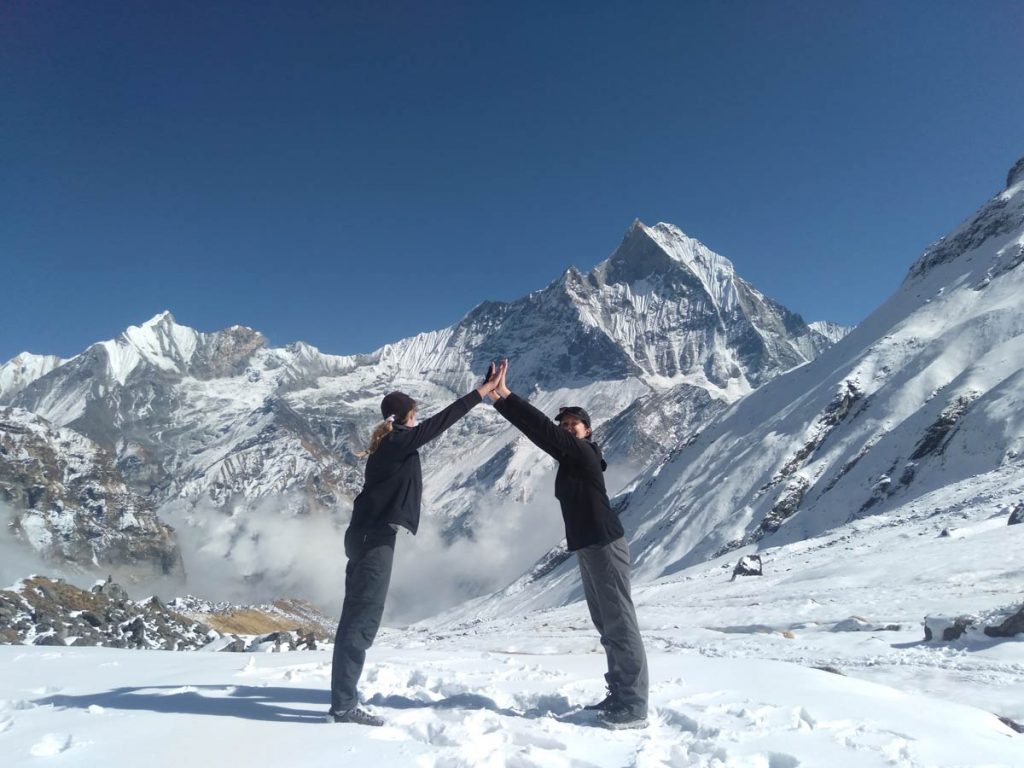
Having said that, it is always better to take precautions. Therefore, try not embarking on the trails alone and join a group of trekkers. Also, inform the guides and indulge in responsible communication.
Elderly People
Age can be a challenging factor against trekking at times as the trail of Annapurna Base Camp is moderately strenuous and has physical restrictions. But it is not impossible for elderly people to embark on their trek.
Trekking along the ABC trail is possible if you have proper physical fitness and cardiovascular health and stamina to walk for long hours every day. The trail also features plenty of rest stops.
Families with kids
Trekking is not restricted by age and the Annapurna region is safe and kid friendly as long as you are taking age-appropriate routes. You do have to pay extra attention to acclimatization and pack extra gear for the kids for added safety.
Additional Tips for your Annapurna Adventure
Despite keeping the above things in mind, adhering to these essential tips for trekking to Annapurna Base Camp can make your adventure even more safe and comfortable.
Contingency Plans
It is best to have a contingency plan in place as it allows you the liberty to adjust your itinerary and add days to it in case of unforeseen emergency. Having a ‘Plan B’ can be of utmost value in case of health issues, trail blockage, or weather-related challenges.
Cultural Sensitivity
While on the trek, keep in mind that you are traversing along the remote areas of the country. Therefore, you must be respectful
A part of it includes not using any kind of foul language or insulting demeanor towards the locals. Be kind to locals as well as fellow trekkers and do not indulge in any arguments or fights.
Environmental responsibility
A big part of a safe trekking experience for you as well as future trekkers along with ensuring safety for the locals comes from emphasizing on the environmental responsibility.
Make sustainable choices while packing your gear and try to minimize the waste. Adhere to the ‘Leave No Trace’ policy to ensure a sustainable ecosystem of the Annapurna region.
